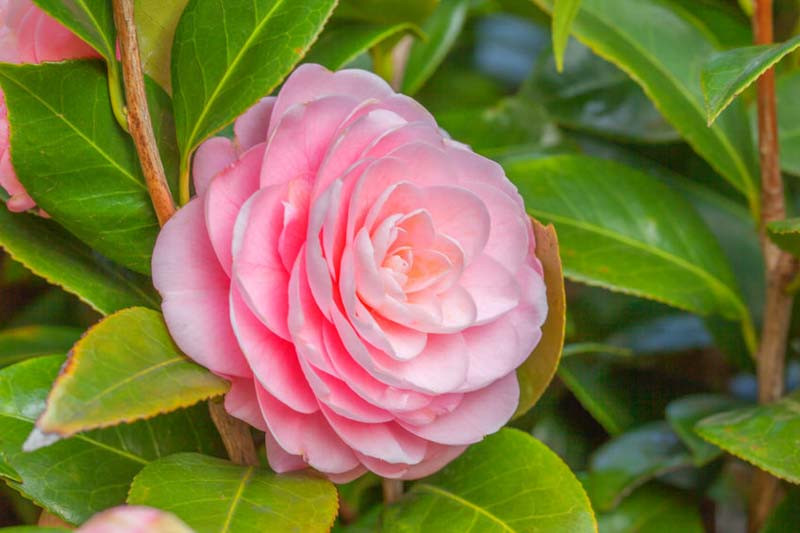Camellia
Camellias are renowned for their exquisite, waxy petals and lush, evergreen foliage. A versatile and hardy plant, Camellias can be grown as standalone shrubs, hedges, or even as potted plants, offering plenty of options for landscaping and interior décor.
Habit: Typically, Camellias have an upright and bushy habit, although some cultivars can grow into small trees. They can reach heights of 6-12 feet (1.8-3.6 meters) and a spread of 5-10 feet (1.5-3 meters), depending on the variety and growing conditions. Camellias are slow-growing but long-lived, providing beauty for generations.
Hardiness: Camellias are generally hardy in USDA 7-9, with some varieties hardy in zone 6. The plants can tolerate cold, but sudden temperature fluctuations can damage the buds. Protection from strong winds and direct afternoon sunlight is ideal. They are best planted in partial shade where the soil is well-drained and acidic.
Flowers and Bloom Time: One of the most appealing features of Camellias is their striking flowers, which can range in color from pure white to deep red and even yellow in some species. The blooms can be single, semi-double, or double and generally appear from late fall into early spring, depending on the species. Their flowering time can extend for several weeks, offering long-lasting color when most other plants are dormant.
Uses: Camellias are excellent for hedges, privacy screens, or as specimen plants in a focal point in the garden. They are also well-suited for containers, making them ideal for patios or indoor spaces. The leaves of certain species, like Camellia sinensis, are used for making tea.
Benefits: Aside from their aesthetic appeal, Camellias offer various ecological benefits. They are excellent for pollinators, particularly bees, and their dense foliage provides shelter for birds. Some species have fragrant flowers, adding another layer of sensory enjoyment to the garden.

